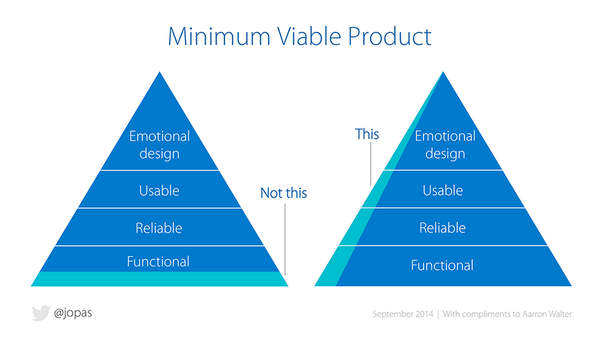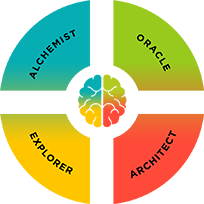Total Reading Time: 11 minutes.
When Patrick Foster of Ecommerce Tips contacted me about doing a guest post on helping people transition or evolve from blogger to ecommerce entrepreneur, I had to say yes. I’ve had a similar evolution myself, but sadly, had to figure it all out on my own.
As a solopreneur who began as a blogger, created information products, became an expert copywriter, took on consulting, created my own physical ecommerce product, and now run multiple companies and teams — I would have benefitted tremendously from the tactics laid out below. I’m hoping this in-depth article gives you the insight and knowledge you need to more confidently become a successful ecommerce entrepreneur. Enjoy!
Introduction: Enter Patrick
There is no doubt that solopreneurship is exploding. It’s an exciting road and you’ll never be lonely with so many digital soulmates on the same path!
So, how do you make money using the power of words? More and more bloggers and online writers are experimenting with affiliate sales and content monetization.
Some take the plunge and move onto the big one: ecommerce. Ecommerce is definitely lucrative and exciting, but it’s also a demanding discipline that will test your business skills and personal resources.
As a blogger and content creator you’ve got some unique strategies available to you to help you drive ecommerce traffic and sales — USE THEM.
Here is how you can use your extensive blogger arsenal to help you succeed at ecommerce — here’s to your solopreneur success!
Step 1: Start with What You Know
So, how do you make the leap from blogger to ecommerce entrepreneur? First things first: start with what you’ve already got.
You may have spent years building an email list, posting regular content, engaging with your readers in comments, building out your social profiles. Start with the audience you’ve already amassed.
Don’t let all those valuable blogger years go to waste by starting again – leverage your readership and community to help you build a sustainable business.
- You have to figure out how to segway into ecommerce and take most of your existing readership with you. How to get people invested in your startup story?
- Ask their opinion — share logo designs, business ideas, and branding concepts with your email list for some genuine brand feedback before you even get started. Bring your readers on the business building journey with you, and keep existing relationships fresh — even if you’ve slightly changed your focus.
- [Note from Arman: look at the number of times me and this site evolved on this journey. And yet, so many of you have been with me since day one. Why? Because I not only make sure to share the story, but my thinking and reasons for making each change. You can almost always convert an audience from one topic or place to another].
- Cherish people’s contact details and invest in a proper CRM (customer relationship management) system. People’s emails are a token of all the shared experiences you’ve had over the years.
- In order to take your email marketing to the next level, segment your contacts into lists and send relevant content to contact subsets. Segmentation is a great strategy to help you send out targeted and compelling content (and personalized offers).

- What are the motivators behind you getting into ecommerce? Share your thoughts and struggles as you transition, and you will find others on the same journey as you.
- Likeminded user groups and chat forums can be a great place to widen your circle to other fledgling ecommerce pros. Get energy and motivation from other people going through the same things as you.
- Analyze your blogger strengths and weaknesses – it’s important to know yourself inside out as an entrepreneur. Did you find video difficult? What about managing invoicing and clients? What technical challenges held you back?
- Being honest about what you found difficult will help you be more realistic about the project and its profitability. Remember that entrepreneurial hunger and curiosity are often fed by adversity – don’t be afraid of challenges.
Who are you breaking bread with? It’s important to surround yourself with the right sort of people in order to invite success into your life. Online groups can be a really powerful way of finding your tribe.
You don’t want to draw a line under your blogger years — bring all that knowledge and drive with you on the next stage of your digital journey…
Step 2: Beware of the ‘Easy Wins’
Is anything worth having easy? Don’t get sucked in by dollar signs and forget to look at what matters, building a sustainable business that A) you will want to run, or B) runs itself. Making more money online is an exciting challenge, but there are very few shortcuts for those who are serious about their ecommerce brand.
- There are a LOT of people out there selling the make easy money online dream — and the majority of it is hyped up and exaggerated. The way that the online marketplace is presented in sales literature is often misleading, people distort figures in order to sell their products and tools.
- Don’t take the shortest route to success. The best brands go through an incubation period; it’s totally fine to stop and think before you launch into something.
- Be wary of paid courses. As a blogger you already know that some blogger growth courses and webinars are absolutely worth their price tag, whereas others still have a long way to go before they are going to help anyone. Not sure whether to invest in an ecommerce course? Read online reviews and seek advice from others who’ve been there before.
- On the other hand – don’t listen to people who tell you that you’ll need investors and thousands in the bank in order to achieve your dreams – you can get started in ecommerce for less than $100! It’s all about financial balance and knowing when to spend.
- Adopt the startup mentality of growth hacker marketing and launch with using the minimum viable product (MVP) methodology to stop yourself from spending money on unnecessaries. You’re often better off spending less on web and brand development and more on marketing and promotion anyways.

Step 3: Choose Your Niche Wisely
Do you really want to sell juicers for the next four years? Is the sight of matcha already boring you to tears? Something which may seem like fun right now may not feel like fun after dozens of customer support calls! Think very carefully about what you’re getting yourself into and try to balance profitability with practicality.
- Look at product profitability, niche growth potential, and think about whether you actually want to be selling this stuff! The best ecommerce brands are run by product advocates and enthusiasts — you may not want to go down this route if you’re private labeling on Amazon, but it’s still worth considering.
- Can you bring passion to the table somehow? (Product accessories — very lucrative niche FYI).
- Starting to research products cold can be overwhelming, so stick to something that’s close to your current sphere of interest at first. Travel blogger? You may want to offer travel-related products like bags, toiletries, hats etc. If there is nothing around you that’s grabbing you, go to places like Amazon and Alibaba for product research (and you might even be able to find some suppliers while you’re there!).
- Going with overseas suppliers means longer wait times, but you will be guaranteed some great deals from Asian suppliers for popular lifestyle products. On the premium end, sourcing stock from local retailers and artists can help build your reputation as a quirky brand.
- Have you got a plan B in place before you start spending money on stock or product development? Stock liquidation should be part of your exit plan — be careful of acquiring capital assets you can’t shift. Dropshipping could be the answer to your ecommerce prayers, and services like Printful mean that you can easily monetize graphic design or illustration through printing. (If your brand is strong enough – you could even create blog swag).
- Validating your product with the market is a really important step. Is there an existing market for your product right now? Where are your customers? You need to make sure that you are tapping into some sort of existing consumer demand. Don’t be afraid of competition — a little competition is only healthy [Note from Arman: yes, seriously! Don’t be afraid of competition. This is market validation.]
Step 4: Build for Longevity
Yes, ecommerce is about sales, but not all ecommerce is about the old-school ‘stack-em-high-sell-em-cheap’ sales (unless you’re in an Amazon price war – good luck). The best ecommerce brands invest in customer experience, branding, and tell one hell of a product story!
- Most ecommerce stores sell a lifestyle and a brand as much as they do their actual physical products. What are you selling? What sort of customers shop with you (and why)? Try to connect with that customer why in order to get under their skins. Gary Vaynerchuk is a great example of an entrepreneur and hustler who has built an entire brand around empowering other people.
- You have to invest in something that looks and feels good. After all, with all the options of where people can spend their money, why would they spend it with you? Quality branding and well-written content is an ecommerce must-have.
- And don’t neglect packaging or the customer delivery experience either. You need to be available to customers 24/7 — it’s a tiring (but rewarding) responsibility. Use live chat software like ZenDesk to help you serve and scale without the drama!
- Inject personality into those boring order confirmation emails and pay attention to all the small brand details. (If you’re selling through a third party marketplace — control what you can from a brand perspective, and leave the rest to them).
- Don’t underestimate the importance of visual cohesion. Choose colors that match your products and niche and make sense for your overall brand story. Here are 50 awesome color palettes to help you choose.

Step 5: Upgrade Your Digital Platform
(Simple) blogs can be quite low-cost and low-maintenance when it comes to hosting and web maintenance — an ecommerce store requires a bit more from your web technology. Ecommerce sales hinge on fast and usable sites – slowness is a huge conversion killer.
- Self-hosted on WordPress? An ecommerce plugin and some premium hosting like WPEngine can help you scale your technology requirements. Out of the hosted platform options, Shopify is probably the most intuitive for bloggers who are used to WordPress.
- Magento and Drupal are also good, but they are really more fitting for a high-powered web environment and may need a bit more developer support (especially Drupal). Then there are loads of smaller custom platforms – usually aimed at niches like jewelry/shoes/food etc. These can also be a good option, but don’t go for something that you can’t fully customize with your own branding.
- Whatever you end up going with, hosting downtime and sloppy coding are not acceptable. You need an ecommerce environment that feels instinctive to the user — which often means something fast and visual. Clue up on your digital skills like CSS and SEO to get the most out of your store.
- You don’t even have to invest in a platform these days — you could sell directly from a Facebook page, your Pinterest board, or from your own Etsy store. [Arman: this is so true. People are starting ecommerce brands from scratch on Snapchat even. Crazy.] These are all great places to start, but a central online hub is often required to up your own brand and ecommerce game. (Social selling may end up becoming your biggest traffic and sales referrer though…)
Step 6: Invest in Great Content
Content creation is one of your strengths as a blogger – use it to your advantage during your ecommerce journey. Remember to match your content to your audience, and always listen to feedback in order to refine your offering. Embrace all the platforms and channels available to you.
- Niche-relevant content is very important for ecommerce, especially in smaller niches that attract product advocates. Quora is a great place for niche content research when you’re stuck for new ideas. It’s also a great place to promote yourself as a niche expert – link back to your own store and content.
- Product content should strike the right balance between information and sales — focus on product benefits, rather than listing features.
- Invest in a great ecommerce blog which can become a brand hub and a place for content exchanges. Make your blog somewhere people want to be seen to encourage mutually beneficial relationships.
- Work on native and sponsored content with relevant influencers and media outlets, but don’t throw all your money away without getting a clear picture of ROI first. Speak to the blogger community first and leverage your blogger status.
- Factor in seasonality to your content calendar — what big sales dates do you need to capitalize on?
Step 7: Market Your New Brand
So how do you get your brand new ecommerce business off the ground? You are going to have to delve into your blogger promotional toolkit and use all the marketing arsenal you’ve got. Invest in social, but focus on a few key channels first.
- Social media advertising is an effective and often inexpensive place to start. Make sure the ads are properly targeted and that they have a compelling value proposition to share. It’s the perfect way to advertise new product launches and special offers.
- On the organic social side, Pinterest and Instagram are great for visual niches. Use tools like hashtagify.me to discover the best hashtags and balance sharing product-related stuff with things likes motivational quotes and customer photos.
- Video is a great product marketing tool, and it’s increasingly inexpensive too! Shoot some videos in your home studio to get started.
- When it comes to link building and guest posting — focus on the blogger community’s rules of give and take. It can be tempting to think you have to ramp things way up now that you’re an ecommerce merchant, but you’re best taking a slow and steady approach to link building…
Conclusion: What You Need to Know about Ecommerce v.s. Blogging
- Ecommerce is still about people — your readers are your customers and vice versa!
- You need to get familiar with ecommerce data and terminology to help you make better financial decisions for your business.
- Niche content is a great thing for both SEO and user — take it seriously and invest time in content creation.
- You can use the blogger community around you to help you spread the word. Relationships and social media are still important, all the same rules apply.
##
Photo credit: Seven Atoms — CC license



